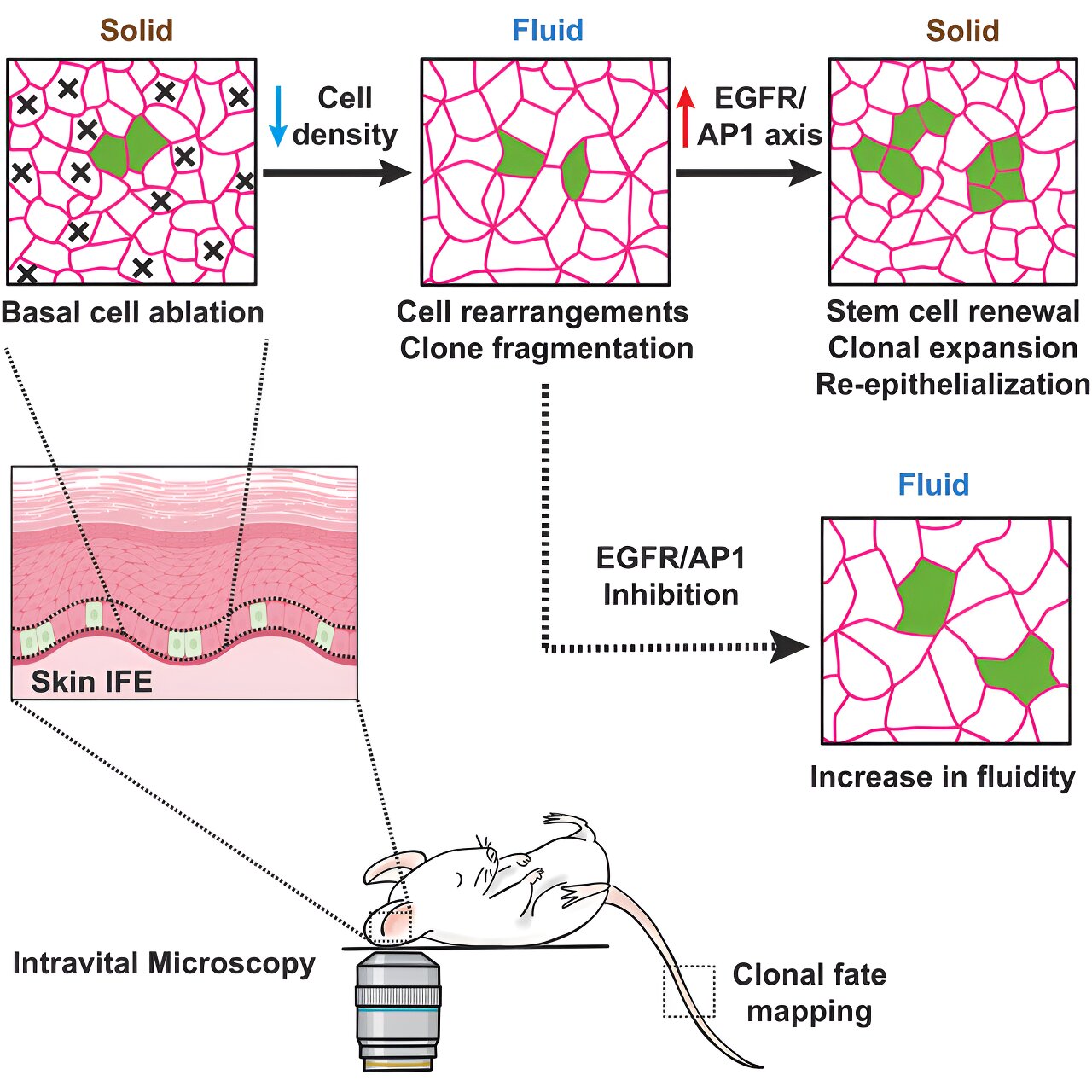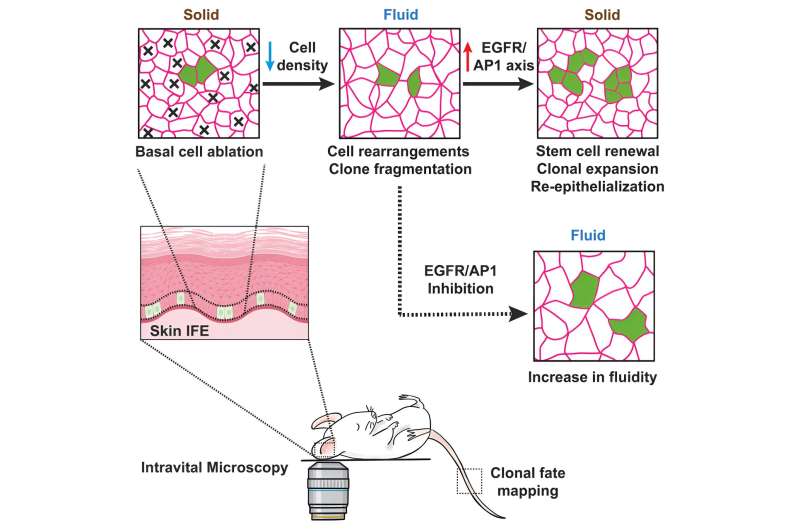

The ability to repair tissue following injuries is essential for the survival of all animals. Following wounding, the skin is repaired by activating, migrating, and dividing skin stem cells. Defects of wound healing in humans lead to chronic wounds that constitute a significant clinical problem with a huge financial burden.
In a study published in Cell, researchers led by Prof. Cédric Blanpain, MD/Ph.D., investigator of the WEL Research Institute, Director of the Stem Cells and Cancer Laboratory, and Professor at the Université Libre de Bruxelles, discovered that wound healing is accompanied by a change in the physical properties of the skin with a switch from a solid to liquid state that is essential for tissue repair.
Using multidisciplinary approaches combining analysis of the behavior of stem cells in living at single-cell resolution, mathematical modeling, biophysical studies, and functional experiments, Rahul Sarate and colleagues have investigated the changes in the physical properties of the skin during wound healing and the molecular mechanisms that regulate this process.
By imaging single fluorescently labeled skin stem cells in real-time in vivo, the ULB researchers found that the physical property of the skin epidermis is dynamically regulated during wound healing. A couple of days following wounding, the skin tissue undergoes fluidization, a transition from a solid-like state to a fluid-like state, that leads to the dispersion of stem cells. Then, the tissue switches back to a solid-like state that is associated with tissue regeneration and repair.
By molecular profiling of skin stem cells during wound repair, the researchers identified a regenerative gene signature at the early step of tissue repair. Pharmacologically blocking different components of this gene signature strongly inhibits wound healing and impairs the switch from fluid to solid-like state, showing the importance of the dynamic regulation of solid and fluid-like states for wound healing.
“It was very exciting and surprising to discover that tissue regeneration is orchestrated by a modulation of the physical property of the skin. The activation of signaling pathways that regulate the dynamic changes in tissue fluidity during wound healing is essential for tissue repair,” explains Sarate, the first author of the paper.
“It will be important to define whether similar changes in tissue physical properties are also important for the repair of other tissues. We hope that by modulating the dynamic transition of tissue fluidity, we will be able to boost tissue regeneration and wound healing, which might be very important to treat patients with chronic wounds that do not heal spontaneously,” says Prof. Cedric Blanpain, the director of this study.
More information:
Rahul M. Sarate et al, Dynamic regulation of tissue fluidity controls skin repair during wound healing, Cell (2024). DOI: 10.1016/j.cell.2024.07.031. www.cell.com/cell/fulltext/S0092-8674(24)00825-0
Journal information:
Cell
Provided by
Université libre de Bruxelles
Citation:
Tissue fluidization during skin repair is crucial for wound healing, study reveals (2024, August 21)
retrieved 21 August 2024
from https://phys.org/news/2024-08-tissue-fluidization-skin-crucial-wound.html
This document is subject to copyright. Apart from any fair dealing for the purpose of private study or research, no
part may be reproduced without the written permission. The content is provided for information purposes only.